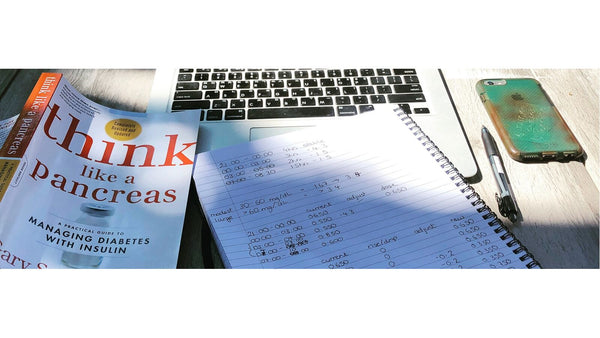Sex and type 1 diabetes

Read about the author MJ Sohal
Sex and type 1 diabetes (t1d) are not often spoken about together, although I really think they should be. As someone who was diagnosed with t1d just as I was hitting puberty, it has been something that I’ve had to manage my whole sexually active life.
Sadly, the lack of conversation around it has definitely impacted my sex life and here I am going to share my personal reflections – not everyone with diabetes might feel the same.
And, the great news is, that by opening up discussions about sex and diabetes, I’ve learned a lot about how diabetes has affected me and, with a little bit of openness, there are some things people with diabetes can do to manage the whole situation better!
Here, I am going to write about:
- What diabetes is, and the differences and similarities between type 1 and type 2 diabetes.
- My own experiences of type 1 diabetes
- The different ways type 1 diabetes can affect someone’s sex life
- Some things people with diabetes can do to minimise the effects on their sex life
- The importance of discussing sex with your diabetic healthcare team
What is diabetes?
When people talk about “diabetes” they are often (sometimes unknowingly) referring to type 2 diabetes. This is a common misconception, perpetuated by the media who also often lump the two conditions together. While they do have similarities (namely that they’re both to do with insulin) they are actually very different and it’s worth understanding the distinctions.
Type 1 diabetes
Type 1 diabetes, also previously known as juvenile onset diabetes and insulin-dependent diabetes, occurs when a person’s pancreas – the organ that produces insulin – stops working and doesn’t produce any insulin at all.
Insulin is the hormone that regulates the amount of sugar in the blood. The food we eat is broken down into glucose, which is absorbed into the bloodstream. Insulin allows the glucose to be used as energy by the cells in our organs and muscles and the body regulates the amount of glucose that’s left in the blood, keeping it between around 4.0 and 7.0 mMol/ L. Without insulin, the glucose remains in the blood and can be extremely harmful if left there (more on that later)
So, people with type 1 diabetes need to take insulin. Unfortunately insulin can’t be taken in tablet form as it is a protein and would be digested. Instead, it is injected (using a syringe, or an insulin pen) or delivered via a cannula connected to an insulin pump.
Type 1 diabetes is thought to be genetic, and is most commonly diagnosed before middle age. It is not reversible, although there are lifestyle changes that can make it easier or more difficult to manage.
Type 2 diabetes
Type 2 diabetes occurs for a number of different reasons. It is often because the cells that produce insulin (the Islets of Langerhan) in the pancreas are no longer able to produce enough insulin. This could be due to old age (and the cells literally wearing out), which is often genetic, or due to obesity (in which case the body can’t produce enough insulin to keep the amount of sugar in the blood within the safe range). It can also occur due to insulin resistance, when the body is no longer receptive to insulin.
The number of younger people being diagnosed with type 2 diabetes due to obesity is increasing.
Type 2 diabetes is managed with a combination of medication, diet and sometimes insulin. For many people, type 2 diabetes is reversible with lifestyle changes.
My experience
I was diagnosed on March 6th, 1995, a date that is etched on my brain. The symptoms – commonly known as the 4T’s: thirst, tiredness, thin and toilet – had been getting progressively more obvious for the few months prior, but it’s likely they’d started over a year before.
I was tired all the time despite eating all the time; I gave up ballet and swimming, both of which I loved. I was losing weight, again despite eating all the time. I was constantly thirsty, but drinking led to loo trips that caused suspicion from teachers, so I stopped drinking at school. I was taken to the doctor, and my mum was told I was likely run down, so she gave me Lucozade, which escalated things somewhat.
By March 5th, aged 10 years and 11 months, I weighed 4 stone. The next morning, I weighed 3 ½. And it was at this point that I was hospitalised with a blood glucose level of 44.4 mMol/ L.
Diabetes then became a way of life: I test my blood sugar multiple times a day, I take insulin using an insulin pump and marvel every day at the fact I’m alive to tell the tale and, of course, there are many tales I could tell.
But I’m here to talk about diabetes and sex.
So how has type 1 diabetes affected my sex life?
Type 1 diabetes is always there; it isn’t something I can really switch off from and that stands even when I’m having sex.
Hypoglycaemia (aka low blood sugar)
Sex is exercise, in that it uses energy, even if I’m not doing “the work”. Exercise is one of the things that can cause my blood sugars to drop (when blood sugars fall below 3.9 mMol/L it is called hypoglycaemia).
Interestingly, the most common symptoms that I experience when I’m having a “hypo” are: feeling shaky, sweaty, and blurry eyesight. And… these are annoyingly similar to feelings I have when I’m having sex in general: feelings associated with sexual pleasure can sometimes be confused with those of a hypo.
Therefore, it can take me a while to notice when my blood sugars feel low. Sometimes, if I’m especially sweaty, a partner might even notice before I do. If I do have a hypo during sex, it means pressing pause. I normally keep a sugar source close to my bed, but I’ve also had to send my poor partners downstairs to the fridge in a shared house, barely clothed and mid-sex, more times than I would like to admit…
Hyperglycaemia (aka high blood sugar)
The opposite of hypoglycaemia is hyperglycaemia: when there is too much sugar in my system. Frustratingly, exercise doesn’t always lower blood sugar levels, sometimes it raises it. Hyperglycaemia is less urgent than hypoglycaemia, and I often don’t notice until after sex.
Sometimes I will detach my insulin pump during sex (perfectly acceptable for an hour or so), but if I forget to reattach I can find myself in trouble. Insulin brings my blood sugars down, but it takes an hour or two to take effect. And it can make me feel truly grotty if my blood sugars reach the high teens/ twenties: lethargic, thirsty, needing multiple wee trips, and grumpy as anything. Not exactly post-coital bliss.
Orgasms
High blood sugar can also affect the ability to orgasm. I can find it harder to have an orgasm if my blood sugars are out of range. I’m not sure what the science is here for a vulva owner – perhaps it’s to do with nerve endings – but there is definitely a correlation.
People with a penis can suffer from erectile dysfunction, due to both diabetes itself and diabetes medication. This is discussed in more detail in our Sex and diabetes article
Insulin pump woes
Generally I love my insulin pump as it means better diabetic control, but there’s the physical aspect of it that can get a little frustrating. It’s an electronic box (think: pager), which delivers insulin through a tube that is connected to a cannula in my stomach. It doesn’t hurt, but even at the best of times it can be a bit cumbersome and affects the clothes I wear (I usually keep it hooked onto my bra, or in a belt around my waist). When I’m naked, or wearing nice lingerie, working out where to put my pump can be annoying to say the least. I can disconnect from it for an hour or so, but the problem then is remembering to reconnect in my post-coital haze.
Often, in the summer or if I am planning a weekend of fun, I will revert back to MDI (Multiple Daily Injections) just so I don’t have to worry about my pump. It’s never too long before I switch back to my pump, though, as the mental load is a lot lighter, even if the physical one isn’t.
Thrush
I’ve written already about my experiences with recurrent thrush, so I won’t go into too much detail here, but the yeast that causes thrush thrives on sugar. Diabetes – especially if it isn’t well controlled – can lead to passing sugary urine, as well as higher levels of sugar in sweat and saliva, and this can cause thrush.
There are certain things I do to reduce the risk of recurring thrush: try and avoid hyperglycaemia; use lubes that don’t contain glycerin; clean my sex toys after each use; and use non-scented shower gels.
Treating it quickly also helps, but when I get recurrent thrush I often have to take multiple doses of the treatment in order to shift it. It isn’t pleasant and, of course, having thrush makes partnered sex uncomfortable at best and impossible at worst.
Diabetic complications
As much as I hate to talk about them, diabetic complications are a very real possibility for people with diabetes. With regard to sex specifically, nerve damage can affect someone’s ability to orgasm and can impact on dexterity when using toys.
Vaginal dryness can also be a side effect of diabetes and this can also impact on sex. A good lube is essential!
Mental health
For me, the mental health implications of having an invisible chronic condition like type 1 diabetes are huge. Depression and anxiety have been a part of my life since I was thirteen and both of these can negatively affect my libido. Frustratingly, orgasms are great for mental health, so having regular sex or masturbating are both really positive things to do, but just as much as it can be a positive feedback loop, low desire can also be exacerbated by a lack of orgasms.
Body image and identity
I so rarely see people with diabetes represented in media and, when they are, they are often so badly researched that they might as well not be there (I remember Dani in “Neighbours” back in the 90’s drinking a bottle of juice and then having symptoms of a “hypo”). It’s frustrating and can exacerbate the loneliness.
As someone with type 1 diabetes, food becomes medicine. I have to eat when I’m not hungry and I was taught to restrict myself when I was. Needless to say, my relationship with both food and my body became even more complicated than it would have otherwise been. I would still class my eating habits as “disordered”, and my body image is also affected by the way I feel about my body: that it’s let me down.
Sex has actually been a way of me reclaiming my body, but a little more on that a bit later.
Relationships
Perhaps the biggest challenge for me has been the impacts of diabetes, depression and anxiety on my ability to make and maintain long-term relationships. Again, not everyone with type 1 diabetes will feel this way, but knowing it’s a possibility is helpful, especially if anyone you know is diagnosed.
I was diagnosed before therapy was really normalised and expected to just “get on with it”. A diagnosis that turned my life upside down is no small thing, especially when it isn’t something that can be cured: every single day of my life was different, not only from how my own life used to be, but from those of the people around me. As this realisation dawned on me, I employed increasingly unhealthy coping strategies that embedded themselves deeply. It was – and still can be – incredibly lonely.
I also worry a lot about my future, which makes it difficult for me to invest in long-term relationships. Ongoing therapy has really helped me manage my feelings, but I still struggle to maintain romantic relationships and this, of course impacts on my sex life. In some ways, it’s perhaps made me more adventurous sexually, and I am grateful for this, but it’s also limited my ability for intimacy due to fear.
Tiredness
Both the mental load, and the effects of blood sugars that don’t always fall within the healthy range, mean I am often tired. I have no yardstick to measure my tiredness against, whether it’s “normal” tiredness, or “diabetic” tiredness, so being tired is just something I am. Often.
In turn, it’s hard for people to understand how much of my brain power is used up by diabetes on any given day, especially when I try so hard not to let it impact my daily life.
Sexual adventure
One very positive effect that having type 1 diabetes has had on my sex life is that it’s led me to be more sexually adventurous than I likely would have been without it. Quite honestly, sex is one of the few times I feel fully connected with my body and am able to switch my brain off.
Sex, diabetes, and healthcare
While many of the impacts of type 1 diabetes on sex that I’ve mentioned are overwhelmingly negative, the most important thing to remember is that none of them are certain. In fact, most of them are mostly, if not completely, avoidable.
The thing that I – and many people with diabetes – lack is open conversations about sex with a healthcare team.
According to Diabetes UK, “getting time and support with any sexual problems is one of your essential diabetes checks”, but it is also not amongst the various essential checks (eyes, feet, blood pressure, urine, etc. etc.) that they list on their site.
Regardless, it absolutely should be. For me, it wasn’t something I ever thought to bring up with my team, and why should I? There’s always enough to talk about at appointments. The only context anyone has ever spoken to me about sex is with regard to planning a pregnancy.
I strongly believe that it shouldn’t be the patient’s responsibility to bring up a topic so big, yet many healthcare professionals don’t – or won’t – talk freely about sex.
By talking about sex, we bring all of these potential problems out of the shadows. By talking about them, we start to understand them and we learn how to manage or even fix them. Having these conversations with a healthcare professional also opens up the means to have them with intimate partners – something I learned far too late. Diabetes adds a layer of complexity to sex and sexuality and should absolutely be discussed as part of ongoing sex education. People with diabetes shouldn’t have to discover all these possible issues by living them, they should be educated about them and understand the many ways to address them.

